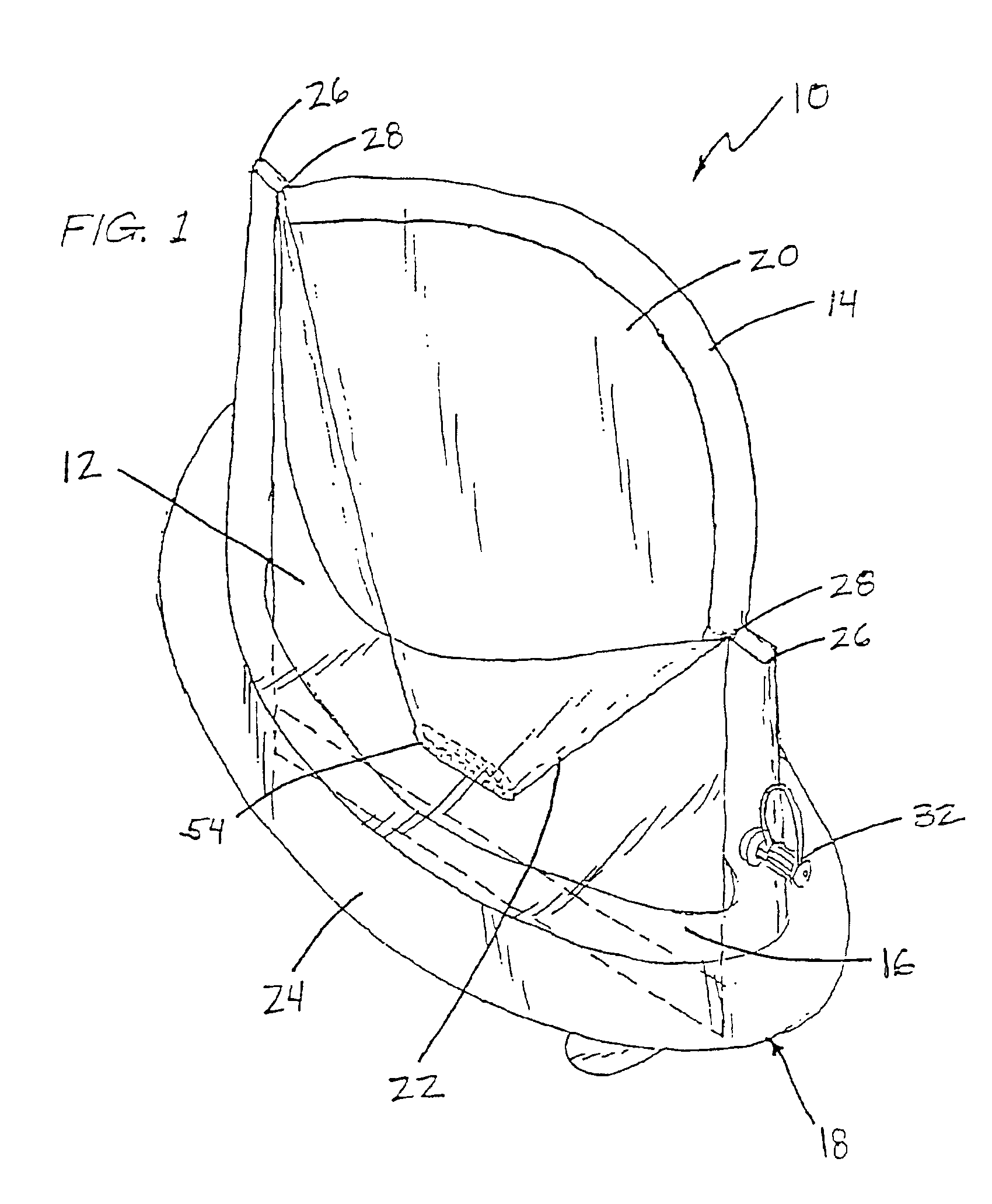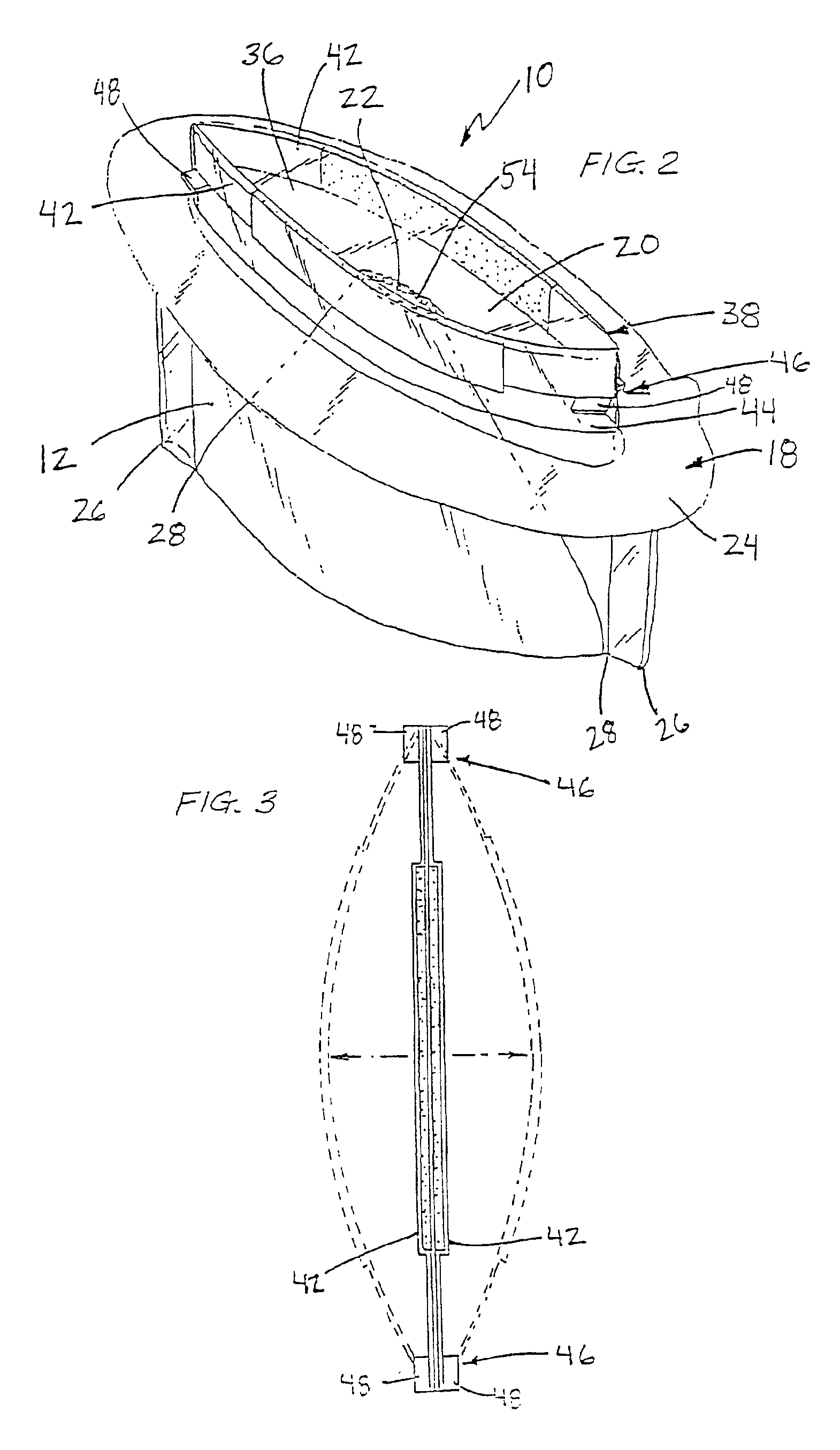Hand access port device
a hand access port and hand technology, applied in the field of hand access port, can solve the problems of excessive gas leakage from the patient's body cavity, adversely affecting the seal, and the inner walls may not effectively contact and seal around the entire outer annular surface of the wrist/arm,
- Summary
- Abstract
- Description
- Claims
- Application Information
AI Technical Summary
Benefits of technology
Problems solved by technology
Method used
Image
Examples
Embodiment Construction
[0066]Referring to FIGS. 1-6, there is shown a first embodiment of the access port device of the present invention, indicated generally at 10, for permitting access to a patient's body cavity during surgery while maintaining body cavity pressure. Access port device 10 generally includes a first sleeve 12 of flexible material including a proximal end 14 and a distal end 16, a securing device 18 attached to the distal end 16 of first sleeve 12, a second sleeve 20 attached to proximal end 14 of first sleeve 12 and a third sleeve 22 of flexible material attached to at least one of the first sleeve 12 and second sleeve 20. As described hereinbelow, this arrangement can be effectively and sealingly attached to a patient's body surrounding an incision to permit the insertion of a hand into a patient's body cavity while simply and effectively maintaining pneumoperitoneum as desired throughout a laproscopic surgery procedure.
[0067]Referring to FIGS. 1 and 5, both first sleeve 12 and second s...
PUM
 Login to View More
Login to View More Abstract
Description
Claims
Application Information
 Login to View More
Login to View More - R&D
- Intellectual Property
- Life Sciences
- Materials
- Tech Scout
- Unparalleled Data Quality
- Higher Quality Content
- 60% Fewer Hallucinations
Browse by: Latest US Patents, China's latest patents, Technical Efficacy Thesaurus, Application Domain, Technology Topic, Popular Technical Reports.
© 2025 PatSnap. All rights reserved.Legal|Privacy policy|Modern Slavery Act Transparency Statement|Sitemap|About US| Contact US: help@patsnap.com



